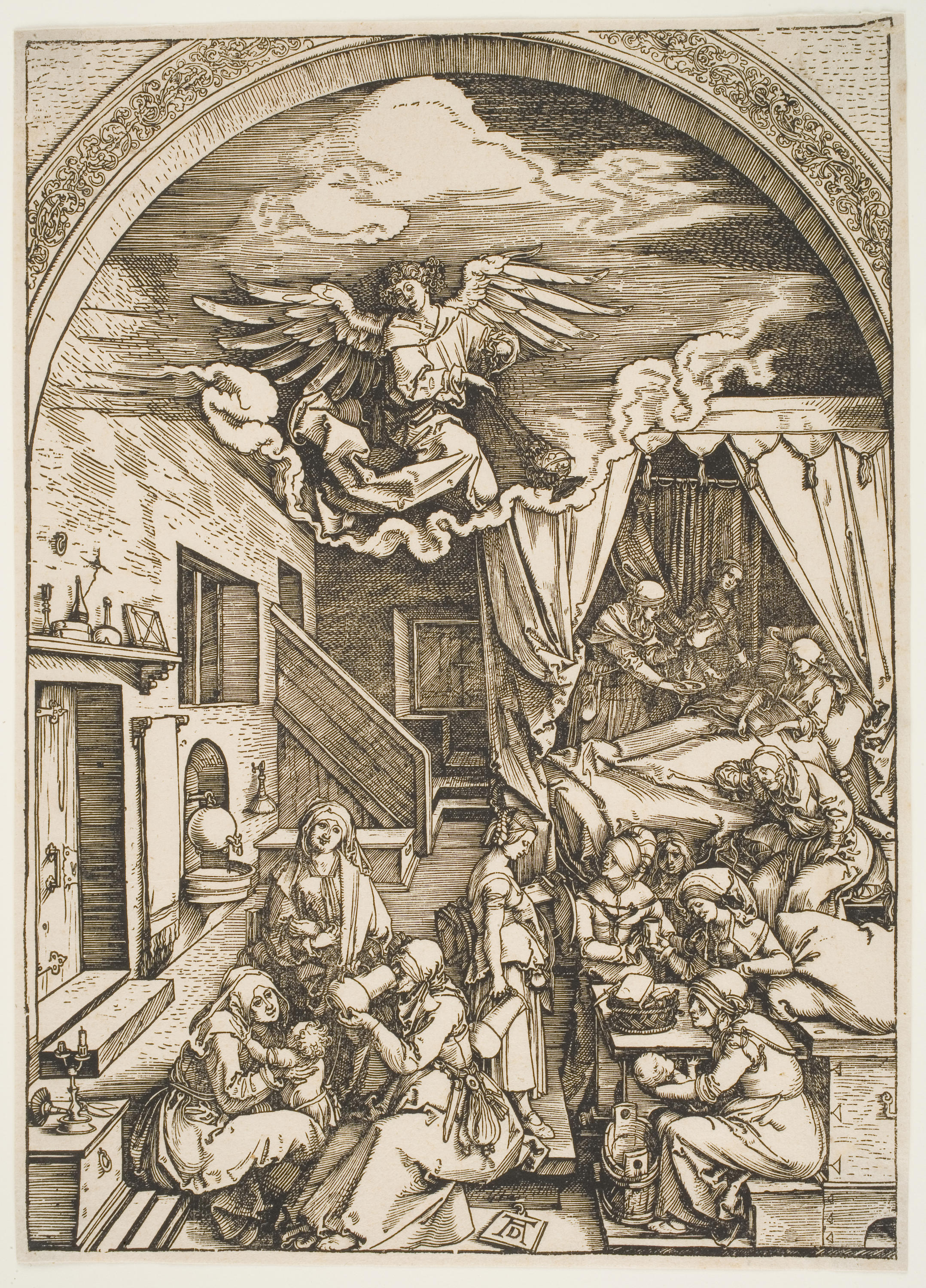The Birth of the Virgin

Albrecht Dürer (Nuremberg, Germany 1471–1528 Nuremberg, Germany), The Birth of the Virgin, from the series "The Life of the Virgin," ca. 1503-04 (printed ca. 1600), Woodcut, Gift of Mrs. Toivo Laminan (Margaret Chamberlin, Class of 1929) in honor of her mother, Anne Bixby Chamberlin (Class of 1898) 1968.34.4
A celebrated citizen of his hometown Nuremberg, Albrecht Dürer served as a member of the city’s council, which oversaw midwifery practices. As part of the council, he had extensive knowledge about regulations on childbirth in the city. The artist here uses what he learned to give us a rare look into a realm that was owned and occupied by women. Saint Anne recovers in bed, having just given birth to the Virgin Mary, although she is not at the center of the scene. Rather, Dürer is far more interested in the companions that surround her in the contemporary German bedchamber. In the foreground, one midwife washes Mary in an action linked to baptism, cleansing her physically and spiritually, as other women bustle around drinking and chatting. Overhead, an angel swings a censer to diffuse incense, marking the sanctity of the occasion. Simultaneously a life-threatening, sacred, and communal affair, childbirth was rarely depicted in German art at the time due to its private nature.
During the summer of 2021, Eleanor P. DeLorme Intern Rachel Beaton (‘21) curated a series of six acquisitions donated by members of the Friends of Art at the Davis, with a focus on the theme of motherhood. Over the course of the 2021-2022 academic year, the Davis will present each artwork individually for a time period of two months. By addressing topics as varied as war, prosperity, intimacy, and reverence, these artworks grapple with the image of the mother as a complex—and often conflicted—figure in both art history and the artists’ personal lives.